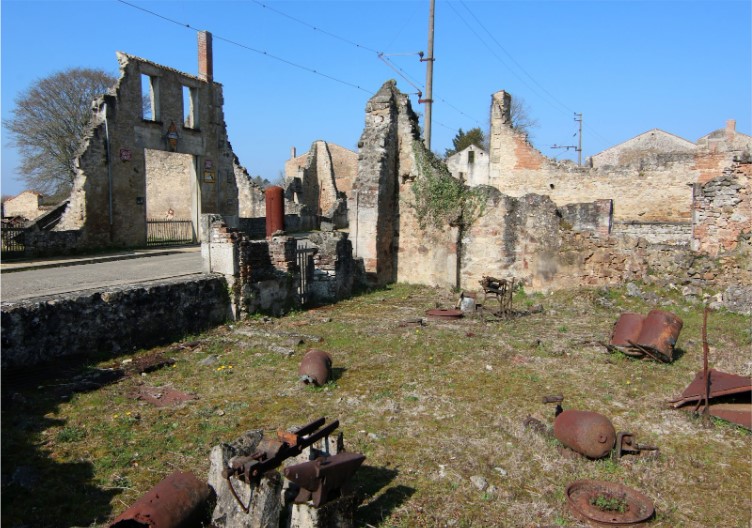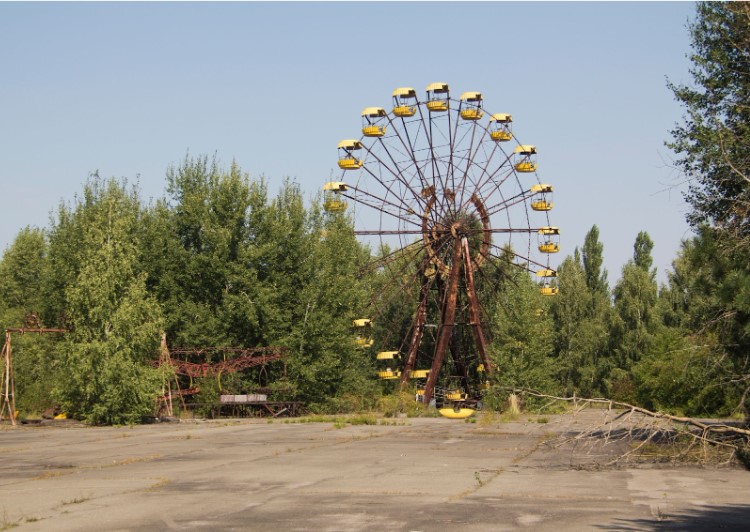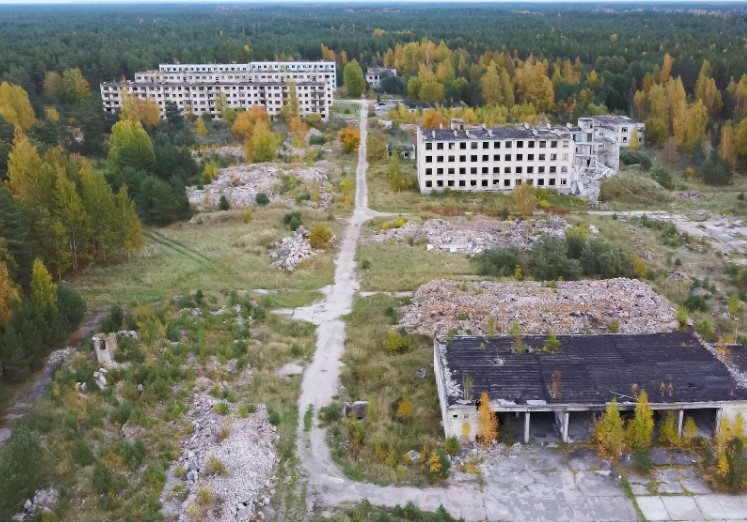 © Photo by Pavel Neznanov on Unsplash
© Photo by Pavel Neznanov on Unsplash
Ghost Towns of Europe: The Forgotten Souls
Laatste wijziging Donderdag, 31/10/2024
As you step into an abandoned village, the world seems to hold its breath. The overgrown paths, once busy and filled with bustling feet, are now choked with weeds. Crumbling buildings, their roofs sagging, and windows shattered.
The air is thick with unsettling silence, broken only by the whisper of the wind as it weaves through the empty streets.
These ghost towns, scattered across the European continent, are remains of a time long past, forgotten by most yet preserved by the elements as eerie moments to the lives that once thrived with them.
Did you know that over 45% of American young adults believe in ghosts? The obsession is real, fuelled by TikTok hashtags like #GhostTowns, which has accumulated over 2 billion views.
The aesthetic appeal of decay, combined with the sense of stepping into a forgotten world, attracts many to these ghost towns. The silence that walks around abandoned villages is often thick with history, with ghost stories and legends that add to their mystique.
The Tragic Memory of Oradour-sur-Glane, France

© MatthewPostlethwaite from Getty Images - Canva Pro
For instance, take Oradour-sur-Glane, a village in France, that has remained abandoned since the horrific massacre of June 10, 1944, when Nazi soldiers killed 642 residents. Rather than rebuilding it, the village was preserved in its ruined state as a memorial, a haunting reminder of the atrocities committed during World War II.
Personal items like bicycles and sewing machines still lie amidst the crumbling buildings, offering a snapshot of life before the tragedy. A new village was later constructed nearby, but the original site is a lasting tribute to the victims.
Imber, England: A Village Claimed by War
In 1943, the villagers of Imber in England were given just 47 days to leave their homes as the British Army took over the area for training purposes. The villagers never returned, and Imber has remained largely untouched, accessible to the public only on specific dates.
This snapshot of the past offers a glimpse into wartime England, a reminder of how military needs sometimes claim and reshape communities, leaving their memories suspended in time.
Pripyat, Ukraine: Chernobyl Disaster

© Simon Podgorsek from Getty Images Signature - Canva Pro
The ghost town of Pripyat in Ukraine was abandoned following the Chernobyl disaster in 1986. Pripyat was constructed to house the workers of the nearby nuclear power plant. The swift evacuation after the disastrous explosion had been so acute that it seems time has stopped ever since. Textbooks still lay on the desks in schools and toys litter the floors of family homes.
Irbene, Latvia: A Soviet Relic

© Uldis Zile from Getty Images - Canva Pro
Another chapter of the story of abandoned places across Europe can be found in Latvia at Irbene, where a ghost town shows just how clandestine and remote the bygone Soviet era is. Irbene used to be a Soviet radar base, designed under total secrecy specifically for surveillance – but not anymore.
Irbene was abandoned after the collapse of the Soviet Union, marking the sudden end of an entire era of European history. This abrupt halt reflects the sweeping changes that reshaped Europe, as it transitioned from Cold War divisions to a more unified and open continent.
Pyramiden, Norway: Frozen in Time

© SindreEspejord from Getty Images - Canva Pro
Pyramiden in Norway, located on the remote Svalbard archipelago, is a ghost town offering a frozen snapshot of Soviet ambition. Once a coal mining settlement, Pyramiden was abruptly abandoned in 1998 due to economic challenges, leaving behind a fully equipped town with cultural centres, sports facilities, and Soviet-era symbols.
The buildings and items remain as they were over two decades ago, making Pyramiden another reminder of Cold War-era expansion. Today, visitors to this desolate site encounter the silent remnants of a unique chapter in history, preserved in the icy landscapes of the far north.
The Revival of La Busliere, France
Paul Mappley and Yip Ward are two gardeners from the UK. This couple had been struggling to get on the property ladder in Kent when they came across the hamlet of La Busliere in Normandy selling for just £22,000.
To clarify, a hamlet is a small settlement, typically smaller than a village and without its church or significant infrastructure. This is the case of La Busliere - an isolated, rural cluster of buildings with just a few homes and basic facilities.
With a vision to revive the former charm of the place, Paul and Yip have taken on the monumental task of demolishing and rebuilding the dilapidated cottage houses that make up the hamlet.
Their efforts are part of the project Help! We Bought a Village, a reality documentary series screened on Channel 4 in the UK. This initiative shows the growing trend of British enthusiasts revitalising abandoned villages across Europe.
Planning to Visit Such Places?
The French village of Oradour-sur-Glane, the UK's Imber and Pripyat in Ukraine are all ghost towns you can visit. For example, tours to the Chernobyl Exclusion Zone have been popular with tourists but the ongoing war in Ukraine complicates travel logistics and safety.
Access is typically restricted to guided tours that follow strict health and safety protocols, as radiation levels in some areas are still a concern.
For one, these sites are often preserved as memorials or historical landmarks, and you may need special permission to visit them. An example of that is the Oradour-sur-Glane open-air memorial. Be sure to visit the website or call ahead for rules and opening times.
Imber, in turn, is operated by the British Army and is only open to visitors on limited dates, so make sure you check in advance.
Alternatively, visitors to Pyramiden should be prepared for the remote and icy conditions, with many structures preserved but susceptible to Arctic wear.
Visitors can explore the ghost town and its surrounding facilities, including the radio telescopes, without any major restrictions. However, as is the case with many remote and abandoned sites, caution is advised, especially when visiting the area after dark.
Safety first: Young adventurers visiting ghost towns should be aware of safety hazards, such as collapsing buildings, nails protruding from old boards or broken glass. Therefore, you definitely want to wear sturdy footwear!
Show respect, as these towns are often kept in remembrance of a tragic past.
Bring water, a first aid kit, charge your phone and if you are out in larger areas let someone know where to look for you.
In the end, do not try to take a souvenir as it might be illegal or perceived as a sign of disrespect for those who used to live in that place.
Have you ever visited any of these ghost towns?
_______________
Young Journalists in Europe - Meet the author
Emma Brownrigg
Hello! I'm Emma Brownrigg Fenech, an 18-year-old studying journalism from Malta. Raised by political discussions, I've forged a deep interest in societal change. Presently, I serve as the Vice-President of my college. In 2022, I made my parliamentary debut. I eagerly anticipate engaging in global dialogue. Journalism and politics aside I enjoy rock and metal music. My commitment remains steadfast—to utilise media as a catalyst for meaningful societal transformation.
This article reflects the views of the authors only. The European Commission and Eurodesk cannot be held responsible for it.